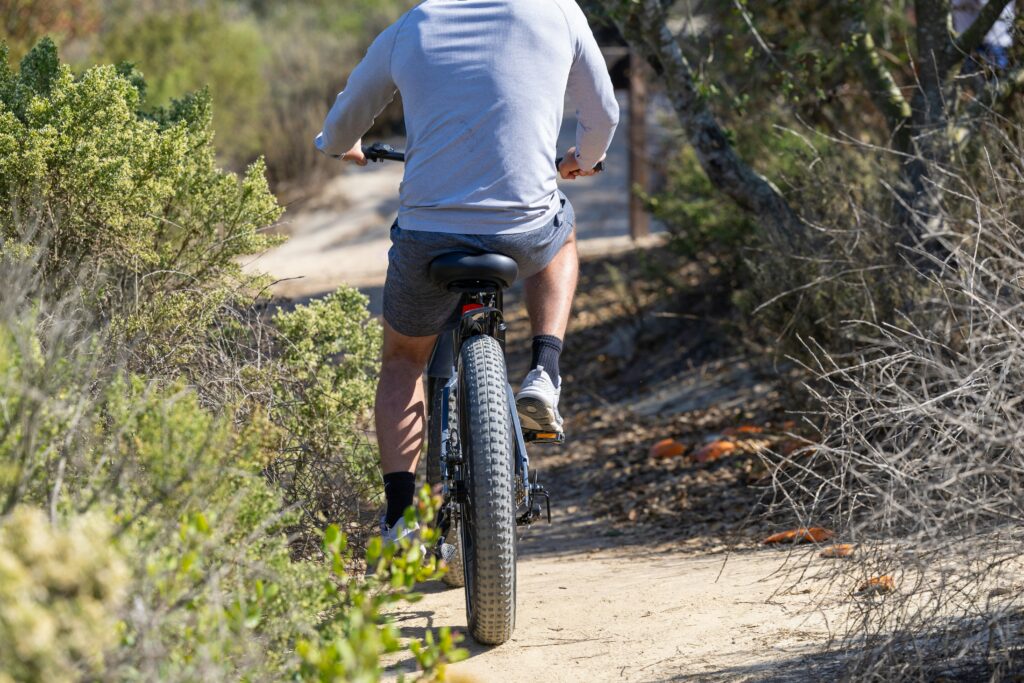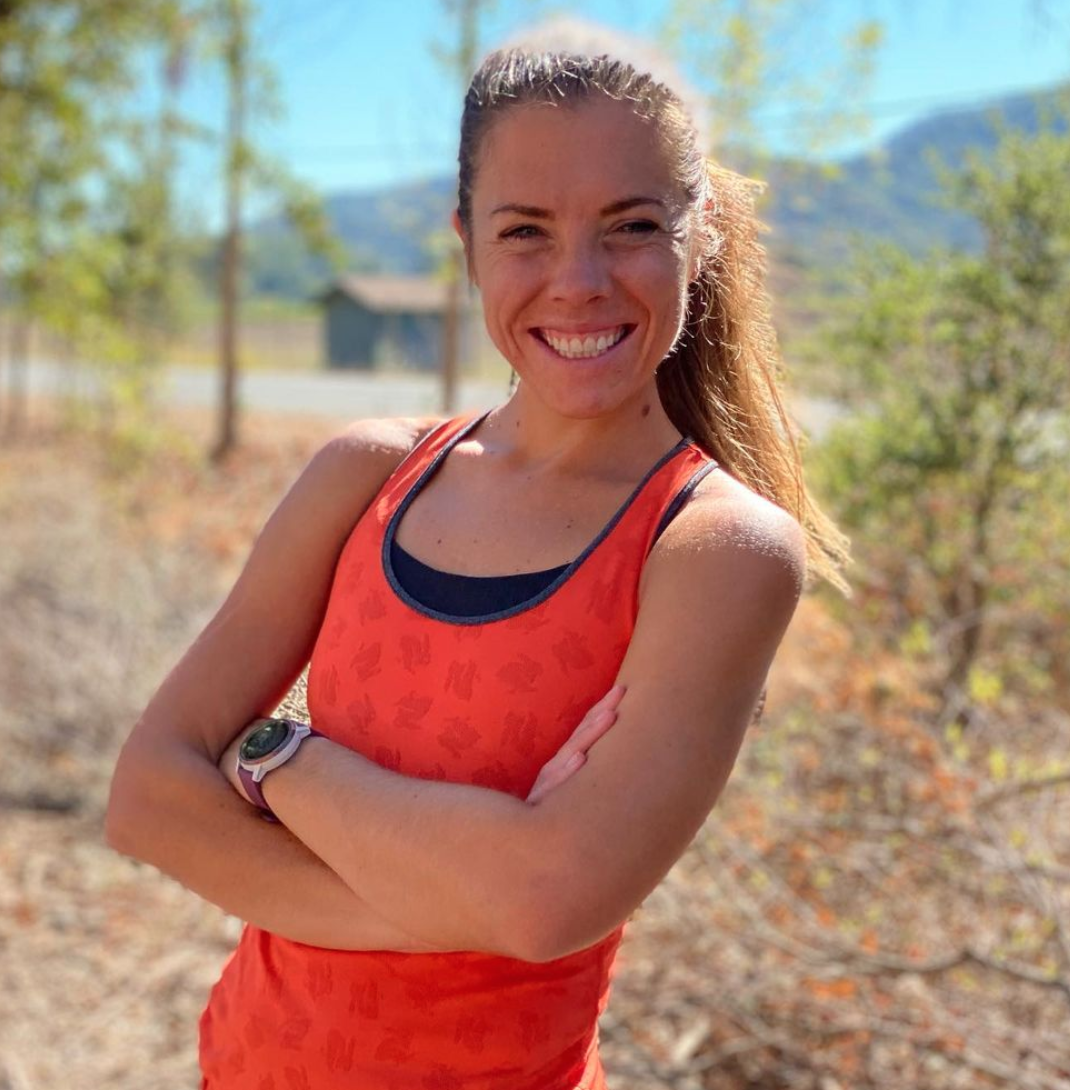Sponsored by
Fat Tire Cycling: Cross-Training For Runners

We know cross-training offers several benefits for runners, including injury prevention, improved fitness, and mental breaks from routine training. While it’s usually not the first choice for runners, fat tire cycling is a great option. Most runners like to get outdoors for their workouts, and fat tire cycling can allow you to explore nature without the pounding of running. If you love nature and are looking for other ways to explore, consider fat tire cycling.
Why is Fat Tire Cycling a Great Cross-Training Activity for Runners?
Low Impact on Joints:
We know by now that running puts stress on your joints. Fat tire cycling, in contrast, is a low-impact exercise, offering a less stressful workout. The wide tires absorb much of the terrain’s roughness, reducing the stress on the knees, hips, and ankles. Now, less stressful does not mean easy, and fat tire cycling is a great nearly full-body workout.
Strengthens Complementary Muscle Groups:
While running primarily works the lower body, fat tire cycling is almost a full-body workout, including the quads, glutes, calves, and even the upper body. This helps build strength and can reduce the risk of common running overuse injuries.
Enhances Cardiovascular Endurance:
Like running, cycling is an excellent cardiovascular exercise. Unlike regular road or even mountain biking, fat tire bikes have added resistance from wider tires. They require more effort to pedal, especially on off-road trails or sand. This increased resistance makes the heart work harder. For runners, this can help improve stamina, endurance, and performance.
Increases Balance and Coordination:
Navigating a fat tire bike over uneven terrains helps your balance and coordination. The skills developed in maintaining stability on a bike transfer well to running, where uneven surfaces are common, especially in trail running. Although we’ve seen our fair share of uneven surfaces while road running like potholes, slanted roads, and curbs.
Mental Health Benefits:
As mentioned above, most runners enjoy and appreciate getting outdoors in nature. Cycling through nature on a fat tire bike can provide a mental health boost. The change of scenery and the thrill of tackling new terrains can provide a much-needed mental break from the monotony of regular running routes. Plus, you aren’t cooped up inside a gym or fitness center.
ADVERTISEMENT

How Can You Get Started With Fat Tire Cycling?
Find a Fat Tire Cycling Shop:
Fat tire cycling shops exist across the United States, so consider shopping at a local shop that can help you get the right bike for you. Like running stores, these shops are invested in getting the right and best bike for their customers’ needs, so it takes the guesswork out for you.
Get the Right Gear:
Safety and comfort should be your priority. Invest in a good helmet, gloves for grip, and appropriate clothing to protect against the elements. Especially for longer rides, consider padded shorts or a gel seat cover for added comfort. Like running, your gear for fat tire cycling is essential.
Choosing the Right Bike:
The first step is to select a fat tire bike that suits your needs. Consider renting a fat tire bike before investing in your own. That way, you can get the feel of a fat tire bike and make sure you like it. Plus, investing in a fat tire bike is not cheap, so you want to make sure it is something you will like and use.
Look for a bike with a comfortable fit and suitable tire width for the terrains you plan to explore. Most fat tire bikes come with tire widths ranging from about 3.7 inches to 5 inches, offering various levels of traction and comfort. It all depends on your needs, ability, terrain, and the area you choose to fat tire cycle. You’ll need different tires for fat tire cycling on the road versus sand versus trails.
Start Gradually:
If you’re new to cycling or coming from a strictly running background, ease into fat tire cycling gradually. You don’t have to be all or nothing. Begin with shorter distances on easier terrains to build your cycling stamina and muscle strength. Consider doing some fat tire cycling on the road, and as you become more comfortable, increase both the distance and difficulty. Like running, if you do too much too soon, you’ll likely end up with an injury.
Join a Community:
Joining a cycling group or club can enhance your experience. It’s an excellent way to learn new skills, discover trails, and stay motivated. Fat tire cycling with others can also provide a social aspect to your training, making it more enjoyable. At the end of the day, working out is supposed to be fun! Cycling shops can provide insights into the rides around you.
Focus on Nutrition and Hydration:
Like running, cycling demands proper nutrition and hydration. Ensure you’re well-hydrated and carry water and snacks for longer rides. Proper fueling will help sustain your energy levels and recovery. As it gets into the warmer months, it’s essential to bring hydration on your rides.
Listen to Your Body:
Lastly, pay attention to how your body responds to this new form of exercise. If you experience any discomfort or signs of overuse, allow time for rest and recovery. Remember, the goal of incorporating fat tire cycling into your routine is to enhance your running, not to get injured.
In conclusion, fat tire cycling offers several benefits including mental and physical. It might not be the first thought about cross-training activity, but it can definitely provide benefits to any runner. The low-impact nature, combined with the strength and endurance it builds, can help any runner.
Whether you’re looking for a change of pace or scenery or someone seeking to complement your running with a fun and effective workout, fat tire cycling might be right for you!
ADVERTISEMENT

Hollie is a runner, hiker, swimmer, residing in California. She has worked in run specialty for nearly 8 years and has fit hundreds of people for shoes. Outside of the running world, she enjoys the general aviation world, her two cats, and spending time with her spouse.









